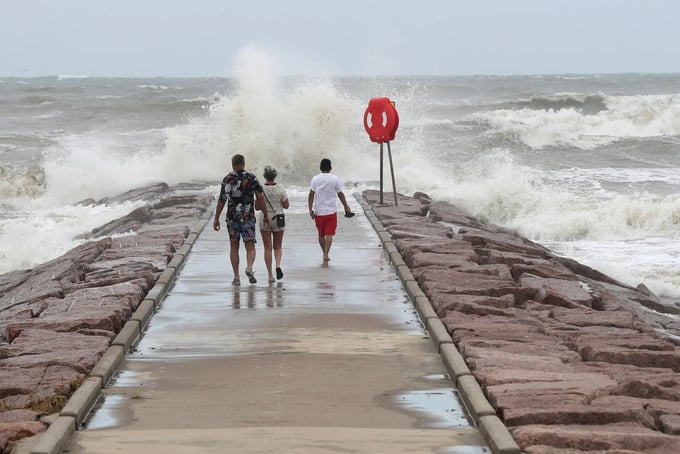May 23, 2025 | 12:32 GMT +7
May 23, 2025 | 12:32 GMT +7
Hotline: 0913.378.918
May 23, 2025 | 12:32 GMT +7
Hotline: 0913.378.918

The path of Tropical Storm Beryl. Source: US National Hurricane Center.
Hurricane Berylis expected to make landfall in Texas early on July 8 (local time) as a Category 1 storm. Previously, Beryl reached Category 5 while passing through Jamaica Bay, causing severe damage in the Caribbean and resulting in at least 11 fatalities.
Coastal Texas municipalities have issued evacuation notices, warning over 1 million residents of the storm’s potential impact. Forecasts indicate that Beryl could regain strength before making landfall, bringing heavy winds and rain. The storm is expected to continue producing heavy rain and strong winds.
According to the U.S. National Hurricane Center, Hurricane Beryl had maximum sustained winds of 65 mph (104 km/h) as it crossed the Gulf of Mexico early on July 7. The storm could cause damaging winds, life-threatening flooding, and storm surges, with storm surges reaching up to 16 inches (40 cm) and heavy rain affecting southern and central Texas coastal areas.
The Texas state disaster agencies have issued disaster declarations for 121 counties, allowing state resources to support local preparedness and recovery efforts. The Texas Division of Emergency Management is prepared to activate the National Guard, search and rescue teams, and other emergency services in anticipation of the storm.

Texas authorities have issued warnings of high winds and high surf. Photo: Jennifer Reynolds/The Galveston County Daily News.
Across the border of Texas, residents of the northern Mexican state of Tamaulipas were relieved to learn that Beryl would only bring moderate to heavy rainfall in some areas. However, authorities remained vigilant, urging residents not to be complacent.
Earlier in the week, officials in Tamaulipas set up temporary shelters, inspected dams, identified landslide-prone areas, and implemented flood prevention measures. They also closed roads, cleared drainage systems, and trimmed trees.
According to Tamaulipas' government secretary, the rains are a blessing for the state, as drought had dried up dams. Additionally, the lagoon system that supplies water to thousands of local residents has been restored.
(The New York Times)

(VAN) Alt Carbon has raised $12 million in a seed round as it plans to scale its carbon dioxide removal work in the South Asian nation.

(VAN) Attempts to bring down the price of the Japanese staple have had little effect amid a cost-of-living crisis.

(VAN) Fourth most important food crop in peril as Latin America and Caribbean suffer from slow-onset climate disaster.

(VAN) Shifting market dynamics and the noise around new legislation has propelled Trouw Nutrition’s research around early life nutrition in poultry. Today, it continues to be a key area of research.

(VAN) India is concerned about its food security and the livelihoods of its farmers if more US food imports are allowed.

(VAN) FAO's Director-General emphasises the need to work together to transform agrifood systems.

(VAN) Europe is facing its worst outbreak of foot-and-mouth since the start of the century.